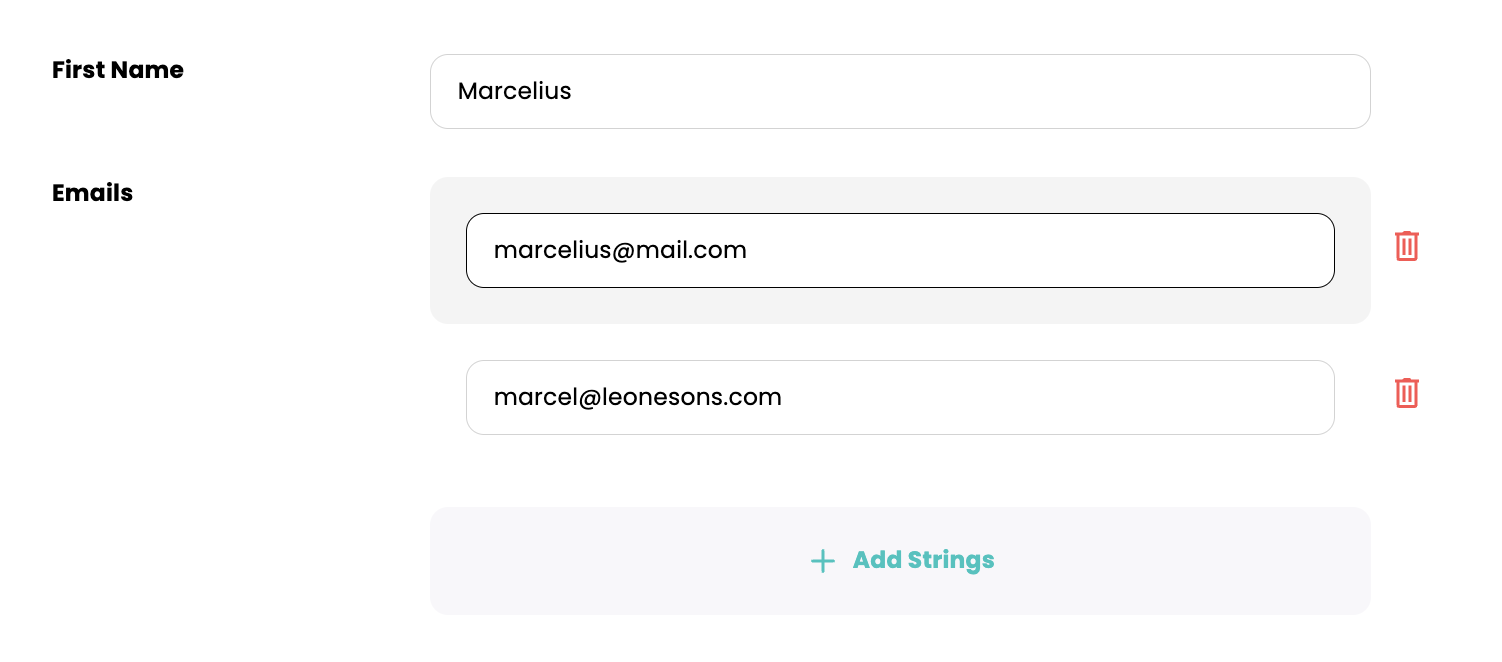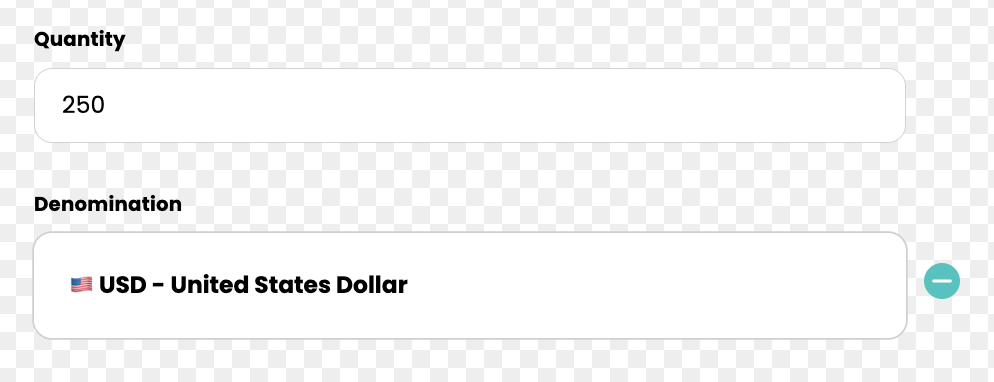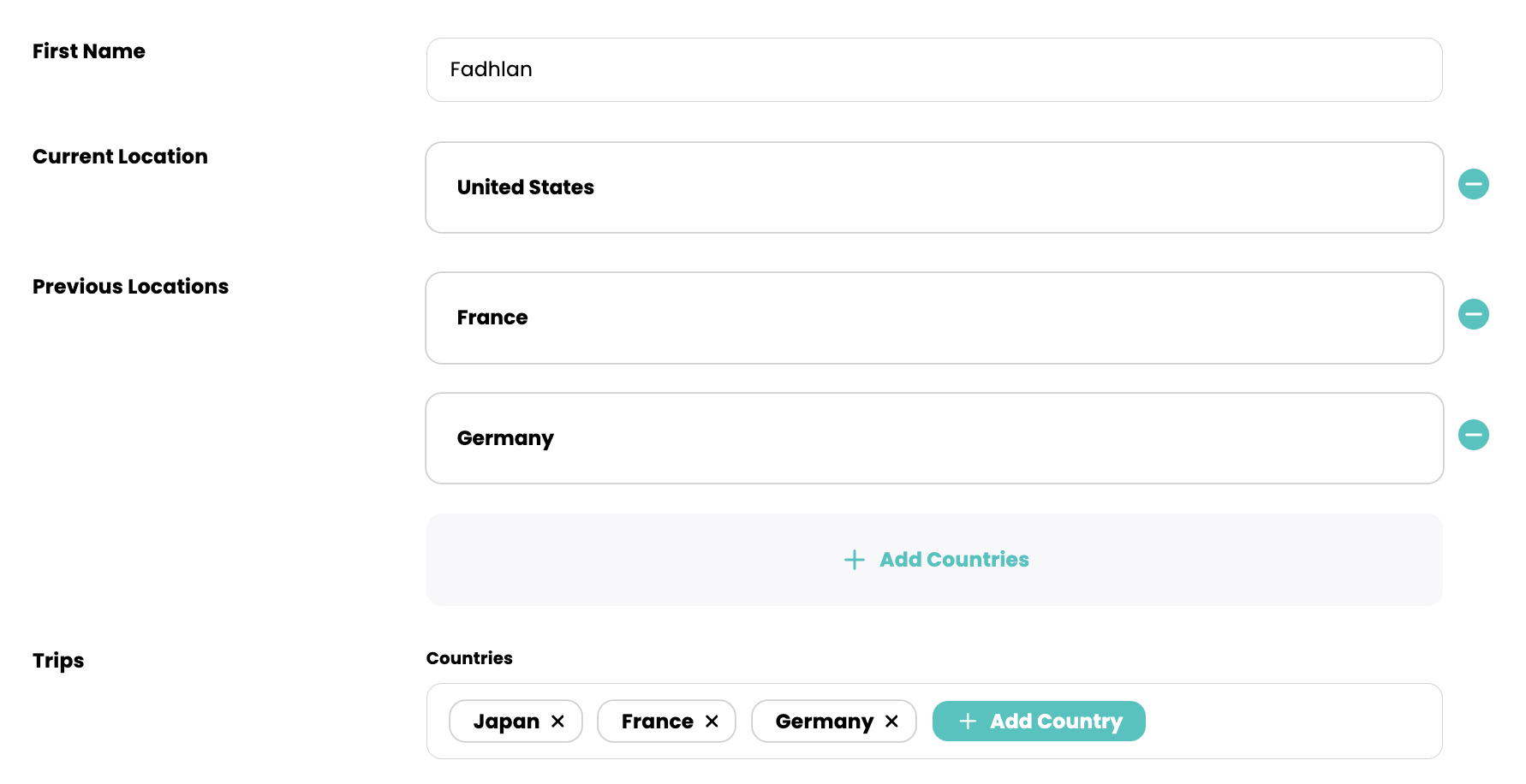boxel
CardDef and FieldDef Relationships
A primitive field is a field that does not have any fields of its own. The StringField, NumberField, or BooleanField classes provided by the card-api are examples of primitive fields.
A compound field (also called a composite field) is a field that has other fields. An example is an author field with firstName and lastName fields.
Also see: CardDef-FieldDef relationships tests
1- Primitive and compound field (singular) contained in FieldDef (contains)
class PhoneField extends FieldDef {
// primitive fields contained in FieldDef
@field country = contains(NumberField);
@field area = contains(NumberField);
@field number = contains(NumberField);
}
class EmergencyContactField extends FieldDef {
// primitive field contained in FieldDef
@field name = contains(StringField);
// compound field contained in FieldDef
@field phoneNumber = contains(PhoneField);
}
In the field definition for the PhoneField class, country, area, and number fields are each primitive fields because NumberField refers to a primitive field definition. They are the fields of PhoneField FieldDef.
The EmergencyContactField field definition contains one primitive field (name), and one compound field (phoneNumber). The phoneNumber field contains the PhoneField FieldDef.
When an instance of EmergencyContactField is rendered in edit format, primitive and compound fields contained in a FieldDef appear vertically by default, where the field label appears above its input in the UI. The fields are editable.

2- Primitive and compound field (singular) contained in CardDef (contains)
class ContactField extends CardDef {
// primitive field contained in CardDef
@field firstName = contains(StringField);
// compound field contained in CardDef
@field emergencyContact = contains(EmergencyContactField);
}
When an instance of ContactField is rendered in edit format, primitive and compound fields contained in a CardDef appear horizontally by default, where the field label appears to the left of its input in the UI. The fields are editable.
The fields nested inside the emergencyContact field will render vertically, as expected from a field contained in a FieldDef.

3- Primitive field (plural) contained in FieldDef (read-only, containsMany)
class EmergencyContactField extends FieldDef {
// primitive field contained in FieldDef (singular)
@field email = contains(StringField);
// primitive field contained in FieldDef (plural)
@field alternativeEmails = containsMany(StringField);
}
When an EmergencyContactField FieldDef instance is rendered in edit format, the primitive containsMany field (alternativeEmails) is read-only.

4- Compound field (plural) contained in FieldDef (read-only, atom format, containsMany)
class PhoneField extends FieldDef {
@field country = contains(NumberField);
@field area = contains(NumberField);
@field number = contains(NumberField);
// providing a `title` is necessary to render the default atom template
@field title = contains(StringField, {
computeVia: function (this: PhoneField) {
return `(+${this.country}) ${this.area}-${this.number}`;
},
});
}
class EmergencyContactField extends FieldDef {
// compound field contained in FieldDef (singular)
@field phoneNumber = contains(PhoneField);
// compound field contained in FieldDef (plural)
@field alternativePhoneNumbers = containsMany(PhoneField);
}
When an EmergencyContactField instance is rendered in edit format, the compound containsMany field (alternativePhoneNumbers) is read-only, and it renders in atom format. alternativePhoneNumbers contains many PhoneField, so we must either provide a title field or a custom atom layout in the PhoneField field definition. This is because the atom format, by default, renders the title field, unless there is a custom atom template provided.

5- Primitive or compound field (plural) contained in CardDef (containsMany)
In the example below, emails is a primitive containsMany field in ContactCard card, and phoneNumbers is a compound containsMany field in the same card. In edit format, these top level fields are editable.
The alternativeEmails and alternativePhoneNumbers fields in EmergencyContactField field definition are nested containsMany fields, and are read-only fields, as seen in items (3) and (4) above.
class PhoneField extends FieldDef {
static displayName = 'Phone Number';
@field country = contains(NumberField);
@field area = contains(NumberField);
@field number = contains(NumberField);
// this provides a custom atom template layout
static atom = class AtomTemplate extends Component<typeof this> {
<template>
(+<@fields.country />) <@fields.area />-<@fields.number />
</template>
};
}
class EmergencyContactField extends FieldDef {
@field name = contains(StringField);
@field email = contains(StringField);
@field alternativeEmails = containsMany(StringField);
@field phoneNumber = contains(PhoneField);
@field alternativePhoneNumbers = containsMany(PhoneField);
}
class ContactCard extends CardDef {
// primitive field contained in CardDef (singular)
@field firstName = contains(StringField);
// primitive field contained in CardDef (plural)
@field emails = containsMany(StringField);
// compound field contained in CardDef (plural)
@field phoneNumbers = containsMany(PhoneField);
// compound field contained in CardDef (singular)
@field emergencyContact = contains(EmergencyContactField);
}



6- CardDef field (singular) linked to from FieldDef (linksTo)
In the example below, TxAmountField class is a field definition, and it has a denomination field that links to the CurrencyCard card definition. Since CurrencyCard is a linked card, editing this field involves selecting a CurrencyCard card instance from the card catalog.
The selected CurrencyCard instance is an embedded card in the TxAmountField field definition. Embedded formats do not have default templates, and thus, we’re providing an embedded template along with its styles in the CurrencyCard card definition.
class CurrencyCard extends CardDef {
static displayName = 'Currency';
// primitive fields (singular) contained in a CardDef
@field denomination = contains(StringField);
@field currencyName = contains(StringField);
@field icon = contains(StringField);
static embedded = class Embedded extends Component<typeof this> {
<template>
<div class='currency' data-test-currency-embedded>
<@fields.icon />
<@fields.denomination />
-
<@fields.currencyName />
</div>
<style>
.currency {
display: flex;
font-weight: bold;
}
</style>
</template>
};
}
class TxAmountField extends FieldDef {
// primitive field (singular) contained in a FieldDef
@field quantity = contains(NumberField);
// CardDef field (singular) linked to from a FieldDef
@field denomination = linksTo(CurrencyCard);
}
Here is what the TxAmountField looks like when rendered in edit format:

7- CardDef field (plural) linked to from FieldDef (atom format, linksToMany field)
class Country extends CardDef {
static displayName = 'Country';
@field name = contains(StringField);
// `atom` format uses the `title` field by default to render if no custom atom layout is provided
@field title = contains(StringField, {
computeVia(this: Country) {
return this.name;
},
});
static embedded = class Embedded extends Component<typeof this> {
<template>
<strong><@fields.name /></strong>
</template>
};
}
class Trips extends FieldDef {
static displayName = 'Trips';
// CardDef field (plural) linked to from a FieldDef
@field countries = linksToMany(Country);
}
In the example above, countries field in Trips field definition links to many Country card instances. When the Trips FieldDef is rendered in edit format, Country card instances will render in atom format. It is possible to add or remove Country instances using the field editor.

8- CardDef field (singular and plural) linked to from CardDef
class Person extends CardDef {
static displayName = 'Person';
@field firstName = contains(StringField);
// CardDef field (singular) linked to from CardDef
@field currentLocation = linksTo(Country);
// CardDef field (plural) linked to from CardDef
@field previousLocations = linksToMany(Country);
// FieldDef (with nested linksToMany CardDef field) contained in CardDef
@field trips = contains(Trips);
}
This example builds on to the field and card definitions in the previous item (7). The screenshot below shows the differences in appearance when a Person card instance is rendered in edit format.
Note that the linksTo and linksToMany fields (named currentLocation and previousLocations) render in embedded format provided in the Country card definition.
The trips field contains the Trips field definition, which has the nested linksToMany field with country instances from item 7. The country instances render in atom format, and they are editable.

A note about self-referential relationships
class Person extends CardDef {
static displayName = 'Person';
@field firstName = contains(StringField);
// Self-referential relationship must use a "thunk"
@field nextOfKin = linksTo(() => Person);
}
Due to the syntax rules of Javascript/TypeScript, we must use an alternate approach to define a self-referential relationship. In this example, a Person has a nextOfKin field, whose type is also Person. We use a function returning Person in leiu of referencing Person directly within the Person class definition. This pattern is colloquially known as a “thunk” in many programming communities.